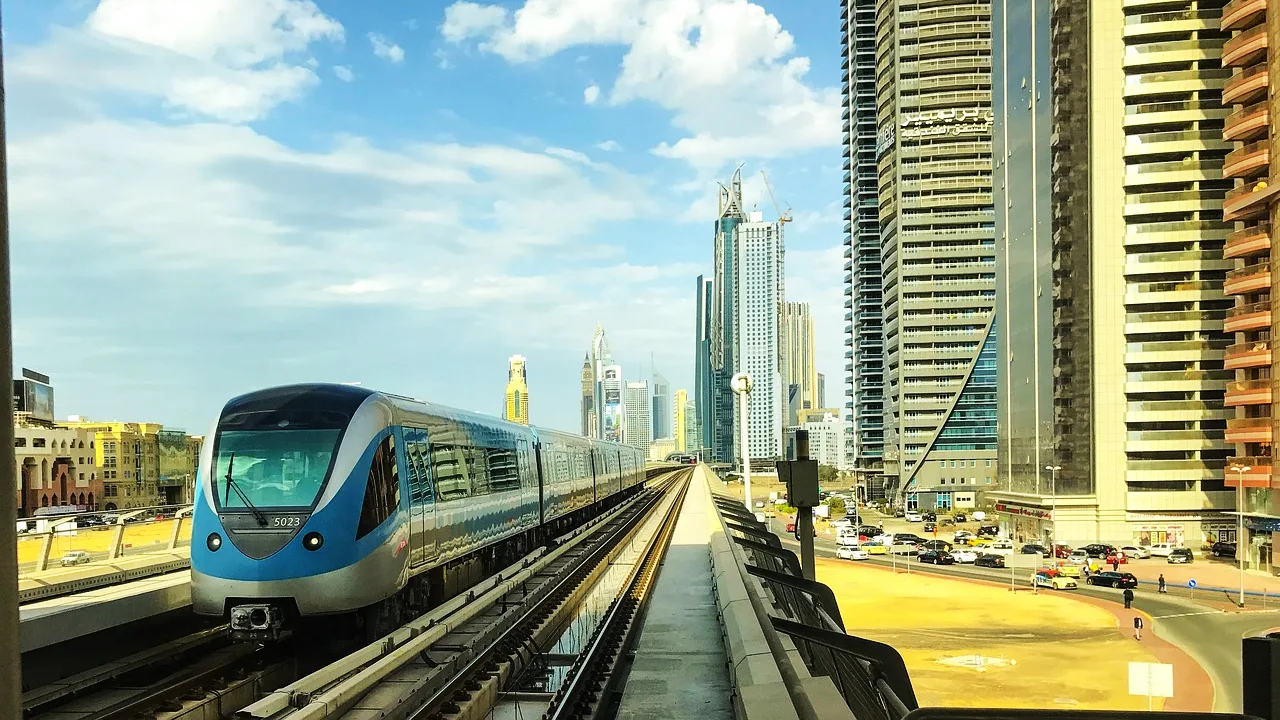A pillar of Dubai’s state-of-the-art transit system, the Dubai Metro is evidence of the city’s dedication to efficiency, modernity, and sustainability. This in-depth exploration unveils the inner workings of the Dubai Metro, delving into its comprehensive infrastructure, advanced technologies, operational intricacies, and the role it plays in shaping Dubai’s urban landscape.
How does the Dubai metro work- Explained
Rail Network:
The Dubai Metro has two primary lines: the Red Line and the Green Line. These lines interconnect at interchange stations, facilitating convenient transfers for commuters. The Red Line spans Rashidiya to UAE Exchange, while the Green Line stretches from Etisalat to Creek.
Stations:
Dubai Metro stations are strategically located across the city, each designed with modern aesthetics and state-of-the-art facilities. These stations are crucial for boarding, disembarking, and transferring between lines.
Track System:
The metro operates on a standard gauge track system, ensuring compatibility with international rail standards. Elevated viaducts host most sections of the tracks, offering passengers a panoramic.
Automated Train Control:
The Dubai Metro operates on an advanced automated train control system. This system comprises three key components: automatic train protection, automatic train operation, and supervision. Together, these components ensure precise control, monitoring, and coordination of train movements.
Driverless Operation:
One of the most distinctive features of the Dubai Metro is its driverless operation. Trains are remotely operated and monitored from a centralized control room. This automation minimizes the risk of human error, enhances safety, and allows for the management of metro networks.
Train Frequency:
Dubai Metro boasts an impressive train frequency, especially during peak hours. Trains run at intervals as short as 3-5 minutes, ensuring a timely and efficient service for the city’s bustling population. The frequency is dynamically adjusted based on passenger demand and the time of day.
Special Carriages:
The metro includes special carriages dedicated to specific passenger groups. Gold-class cabins offer a premium travel experience with enhanced comfort and exclusivity. Additionally, there are dedicated carriages for women and children, ensuring a secure and comfortable environment.
Nol Cards:
The Dubai Metro utilizes the Nol card system, a smart card to an electronic ticketing and payment method. Passengers can load credit onto their Nol cards, making it a convenient and seamless way to pay for metro rides.
Ticketing Options:
Passengers have various ticketing options, with Nol cards available in Silver, Gold, and Blue. Single journey tickets for those who prefer a one-time use option. Purchasing and reloading Nol cards can be done at metro stations, online, or at authorized retailers.
Fare Structure:
Dubai Metro operates on a zone-based fare structure. The number of zones traveled through throughout the trip determines the fee. Passengers tap their Nol cards at entry and exit gates, and the fare is automatically deducted based on the distance traveled.
Real-time Information:
Passengers benefit from real-time information displayed on platforms. Information includes train arrival times, service updates, and any relevant announcements. Mobile applications enhance the passenger experience by providing features for journey planning, service alerts, and Nol card management.
Wi-Fi Connectivity:
The Dubai Metro provides free Wi-Fi on trains and at stops to accommodate today’s travelers. This amenity allows passengers to stay connected, access information, and make their commutes more productive and enjoyable.
Green Initiatives:
The Dubai Metro is committed to green initiatives, incorporating energy-efficient technologies and eco-friendly practices. These programs fit Dubai’s larger goal of developing into a savvy, eco-friendly city. The metro’s commitment to sustainability extends to energy-efficient trains and station designs.
Route Extensions:
Dubai’s commitment to enhancing public transportation includes plans for expanding the metro network. Future route extensions aim to connect more areas, providing additional convenience and accessibility to a growing population.
Introduction of New Lines:
Beyond expansions, there are proposals for the introduction of new metro lines. These developments signify Dubai’s dedication to staying at the forefront of innovative urban mobility solutions, catering to the evolving needs of the city’s residents and visitors.
Conclusion:
The Dubai Metro is a beacon of progressive urban planning, seamlessly blending state-of-the-art technology with a commitment to sustainability and efficiency. From its meticulously planned infrastructure and automated operations to its passenger-centric innovations, the Dubai Metro has redefined the urban commuting experience.
